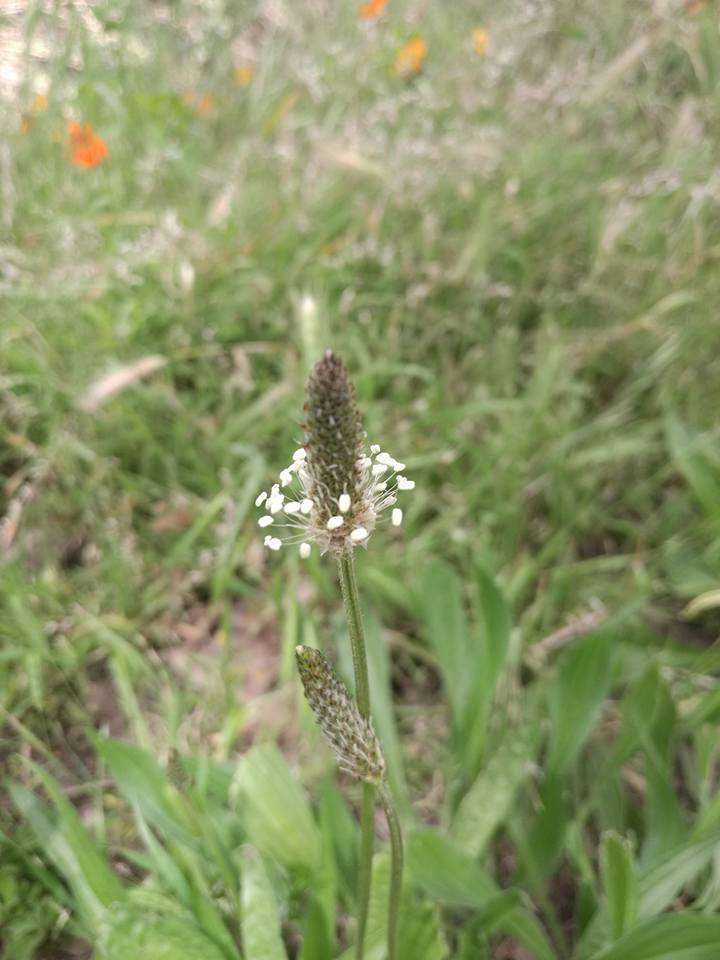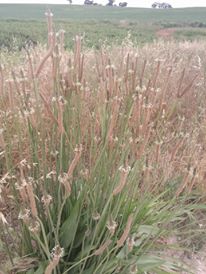
Common names: Plantain, Ribwort, Ribwort Plantain, Narrow Leaf Plantain, English Plantain
Taxonomic name: Plantago lanceolata
Family: Plantaginaceae
Uses: food, wound healing, respiratory ailments
Area of origin: Eurasia
Warnings: none
Our Plantain (Plantago lanceolata) is a close relative of Plantago major and just as useful. Some herbal books only talk about ‘major‘, but for us, this one’s OK.
To identify ours, look for long, pointed leaves, they’re a dead giveaway. They’re slightly rough and have long, pronounced ribs. That’s how Plantain gets one of its many names – Ribwort. The leaves are long, ‘lanceolate’ in fact. That’s how it gets its species name ‘lanceolata‘.

This is a humble plant, indeed. It likes well compacted soil, so thrives by paths and roadsides and in lawns. Plantain occurs pretty well everywhere in the world that Europeans have invaded (or just visited on their off days). It occurs in a few other places, but that generalization gives it one of its nicknames ‘White Man’s Footprint’ although there are a couple of other plants with that epithet.
You can eat Plantain’s taproot and leaves, though there are better things out there. They’ll do in a pinch though. The seeds are edible too and have a high fibre content. Psyllium, the high fibre dietary booster is a member of the Plantain family of plants.
Plantain’s nature is cooling, softening, and moistening while being astringent. It’s the astringency that gives it one of its most common uses – it is used to help heal wounds such as cuts and scrapes. Just mash up some leaves and apply directly to minor wounds. It is this property that helps with rashes, stings and bites.

Plantain’s next property is that it can help draw out things that are not wanted, whether that be stings, splinters, or pus. It’s great then for pimples and boils. It’s soothing, moistening nature helps here by relieving the inflammation and irritation associated with them. A few mashed up leaves held on by a bandage for a while will do the trick. In fact, some specimens of Plantain can get leaves so long that they can be the bandage themselves!
Like Chickweed, think of Plantain when you see redness associated with skin problems.
Plantain is a well respected remedy for upper respiratory tract mucus and congestion – its soothing, cooling nature offers relief for inflamed membranes while it’s astringency helps tone them up and reduce the production of mucus. Plantain also acts as a mild expectorant.
Plantain is also useful in some kidney disorders, soothing inflammation and improving efficiency by nourishing the organs, rather than forcing them to work harder. It can be of benefit in most urinary tract disorders.


Buck’s Horn Plantain (Plantago coronopus)is another very common Plantain around Gawler. I’ve tested its wound healing properties and they’re up there with the other Plantains mentioned. I don’t know about its ability to heal chest problems though. It has a slightly saltier taste than the other Plantains, so may be even better at drawing foreign objects from the skin and relieving swelling.

